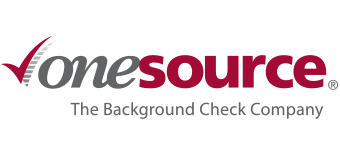This article was originally posted on theolsongroup.com. It has been rewritten and published for One Source by the author.
When HR professionals think about improving and maintaining employee performance, the sharpening of skills like time management, setting clear goals and expectations, or communication practices might come to mind. However, they may turn a blind eye to what happens outside of the workplace—which can have a larger impact than initially perceived.
This begs the question, “How do you ensure that those same standards originally screened for remain upheld?”
Standard employment screenings include information up to the moment they’re run, but what about criminal offenses that occur after that? How might employers learn about revoked licenses, suspended work authorizations, or other suspect behavior of employees?
Fortunately, consistent rescreening or continuous criminal monitoring solutions can help employers achieve just that.
Benefits of Rescreening Employees
Increased Safety & Security
Periodic rescreening can help identify individuals in your workplace that could potentially cause harm. Categories covered include drug use, theft, fraud, violence, sexually-based crimes, abuse, and more. That, in turn, helps to protect your customers, employees, and organization as a whole.
Reduction of Turnover
It’s simple: the increase in safety and security can lead to a better working environment. Happier staff tend to show up, perform, and speak well about their workplace far more than their counterparts in stressful or unsafe environments.
An Unburdened HR Team
With a consistent rescreening program and a good policy, the process can essentially run itself, leaving more time for HR to focus on team members and their performance.
How It Works
Don’t worry; keeping current on your employees is easier than it sounds.
Your Choice
First, decide what data your organization would like to receive. Search parameters can include real-time county criminal records, nationwide databases, federal records, sex offender registries, professional licenses, industry-specific repositories like financial or healthcare sanctions, and more.
Next, determine which solution is a better fit for your team:
Rescreening
A process as simple as uploading a spreadsheet of applicants and checking a box, rescreening can be scheduled periodically such as monthly or annually.
Continuous Criminal Monitoring
An automated search of over 650 million records that continuously identifies new criminal activity at the beginning of each month. Results are verified by our team to ensure accuracy before the report is returned to you.
And finally…
Remember Compliance
No matter which option you choose, organizations must not forget that they have compliance obligations under the Fair Credit Reporting Act (FCRA) and other laws.
Federal and state laws still require employers to complete the disclosure and authorization process on applicants and employees. If you plan to run background checks again during the duration of their employment, that decision must be clearly and conspicuously stated within this disclosure. If you haven’t done so upon hire, new consent is required prior to any rescreening. Additionally, should information be uncovered that results in termination, the adverse action process must be followed. Consider consulting with legal counsel to verify that your procedures comply with these requirements.
Last but not least, consider whether your employment policies address rescreening and continuous monitoring. Should questionable information about an employee be uncovered, this will guide you on your best course of action. The Society for Human Resource Management (SHRM) is a great resource for sample background check policies and procedures.
While most organizations try to onboard trustworthy individuals, at the end of the day there’s no way to predict what the future holds for every member of your staff. Adding a monitoring service can offer helpful insight into new criminal offenses or changes in sex offender registration to better inform you about the individuals within your organization.
If these services are on your radar, One Source can help. Rescreening is easy in our portal through a simple spreadsheet upload, adverse action can be initiated with one click, and we provide templates for necessary compliance forms at no extra cost.
For more information on rescreening or continuous criminal monitoring, or to get started, don’t hesitate to reach out.


